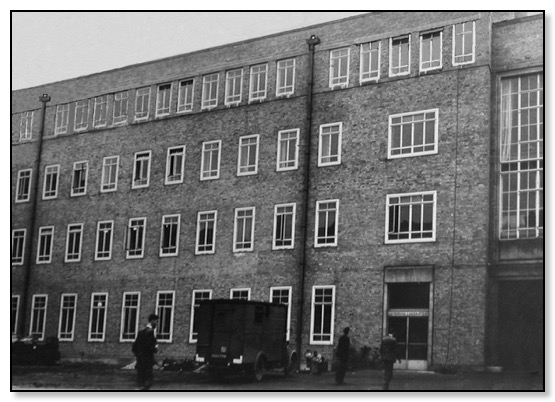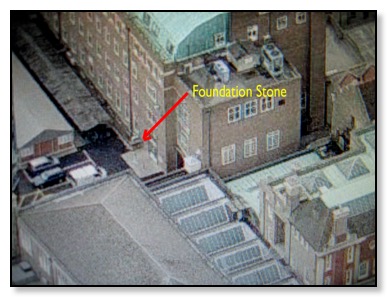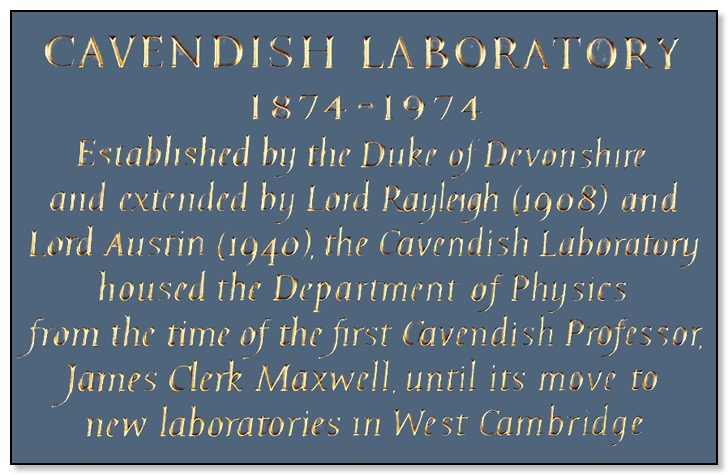Cavendish Laboratory
Austin Wing 
Early picture of the Austin Wing
It was in April 1936 that Herbert Austin sent the following letter to the Chancellor, Stanley Baldwin.
Lickey Grange,
Nr. Bromsgrove
April 29th 1936
Dear Mr. Baldwin,
I have for several years been watching the very valuable work done by Lord Rutherford & his colleagues at Cambridge in the realm of Scientific research & knowing that, as Chancellor, you are keenly interested in obtaining sufficient funds with which to build, equip & endow a very much needed addition to the present resources, I shall be very pleased indeed to present securities to the value of approximately £250,000 for this purpose.
May I request, if it is in order that my name will be associated with the extension.
I am,
Yours sincerely,
H. Austin
The Chancellor replied
10, Downing Street, SW1
April 30 1936
Dear Sir Herbert
As Chancellor of the University of Cambridge, I gratefully accept on behalf of the University your most generous offer of £250,000 towards the extension and further endowment of the Cavendish Laboratory.
There can be no greater encouragement to the men who devote themselves to scientific research than to feel that their work is appreciated by those engaged in industry, the progress and development of whose business depends so much on the laboratories of our country. Your noble gift will be invaluable at this time to Cambridge, and the benefits arising from its applications will be available for the civilised world.
Yours very sincerely
Stanley Baldwin
Lord Rutherford, Director of the Cavendish Laboratory, made the following statement.
I am very much gratified at the very generous gift of Sir Herbert Austin and his recognition of the important work that has been done in the past by Sir J J Thomson and his colleagues at the Cavendish Laboratory. The donation will give us an opportunity of building a modern research laboratory and will also be of great value in helping to defray the large expenditure required on modern research in physics, which often involves the use of apparatus on a costly scale. The first use of the money will be to build a laboratory for the utilisation of very high voltages, in order to carry out experiments on the transmutation of matter by high-speed particles and radiation.
The Austin Wing
The Cavendish laboratory was severely overcrowded but with the Austin donation it was now possible to use some of the money to fund a high-tension laboratory and cyclotron, along with improving the Cavendish block. In the end a total of £91,500 was used for the construction and equipping the new wing.
Early in 1938 Lord Rutherford died unexpectedly and so Lawrence Bragg was appointed as Director.
Physics at Cambridge had enjoyed immense popularity under Rutherford, but further progress in nuclear science required resources that were no longer available at the University. 'Big Science', nuclear and particle research requiring highly energetic accelerators, could now only be supported at national levels of expenditure. At the same time the other Cambridge sciences, such as Chemistry and Engineering, were growing in popularity. It was clear that the Cavendish needed a change of direction.
Architects Adams. Holden & Pearson & Harold Cherry were given the contract to design the new Austin Wing. The main architect was Charles Holden who designed the London Underground stations for the London Passenger Board in the 1920s and 30s.
Work started in May 1938 using a local builder by the name of Rattee & Kett, who are still in Cambridge today doing Building Restoration & Stonemasonry, and in 2006 carried out stonework cleaning, restoration and repair to the external fabric of Baskerville House, Birmingham.
With war on the horizon, Bragg only got permission to go ahead with the project by agreeing that the wing would be used for military purposes during hostilities, and in fact, it was used by an Army ballistics unit and Navy signals unit.
The Austin Wing actually cost £77,000 with apparatus and fittings a further £15,000. Lawrence Bragg made the comment that they were lucky to build it so cheaply, as after the war it would have been far more expensive.
------------Eric Marland 
Location 2006.
It is believed that the stone is no longer there, because of redevelopment.
When the building was well under way, Bragg was very embarrassed to get a letter from Austin asking when he could lay the “foundation” stone. The architect, Charles Holden (1875-1960) suggested that as the “foundation” were actually in as at this point, (in fact it appears they were now up to the second floor). That the foundation stone could be built into a wall flanking the entrance steps.
The laying of the foundation stone ceremony took place on the 6th May 1939. It appears that Austin complimented him on this original concept, but Holden let the cat out of the bag by saying “Oh, you heard about that, did you, we forgot all about the bloody thing”.
The Austin wing was completed in June 1940, it was 115 feet long and 45 feet wide, with four floors and a basement giving a total floor area of 34,000 square feet. It had a central corridor which ran the full length of each floor, with research rooms typically measuring 15 feet by 17 feet opening off the corridor. The external and corridor wall supported the floors, so that internal walls could be easily removed to give extra room if needed. To facilitate this arrangement the services came up a shaft next to the elevators and ran along the corridor above the doors.
The second floor contained offices, a museum bay, tea-room and library. The colloquium room seated 70 and there were various workshops and storerooms, but no teaching facilities. The building cost £77.000 with equipment adding a further £10,000. Bragg was allowed to spend a further £4,500 on “magnificent” furniture and fittings, but these were stored in the library for the duration of the war.
When the Second World War began the British demand for physicists exceeded the supply. In 1939 the Cavendish was producing 160 physicists a year, with 40 researchers and 20 assistants. In the years following the war these numbers increased tremendously, and by 1948 had reached a peak of 600 physicists a year, with 160 in research. The War also prompted the introduction of telephones and secretarial staff to the Cavendish.
___________________

This slate plaque in Free School Lane commemorates the first hundred years of the Cavendish Laboratory, from its foundation by the first Cavendish Professor of Experimental Physics, James Clerk Maxwell, with the move of the Physics department in 1974 to a green field site in West Cambridge.
DNA
"The structure of DNA (known as "the secret of life") was discovered in the Austin Wing of the Cavendish Laboratory by Francis H.C. Crick and James D. Watson - for which they and Maurice H.F. Wilkins - were jointly subsequently awarded the 1962 Nobel Prize for Physiology & Medicine."

